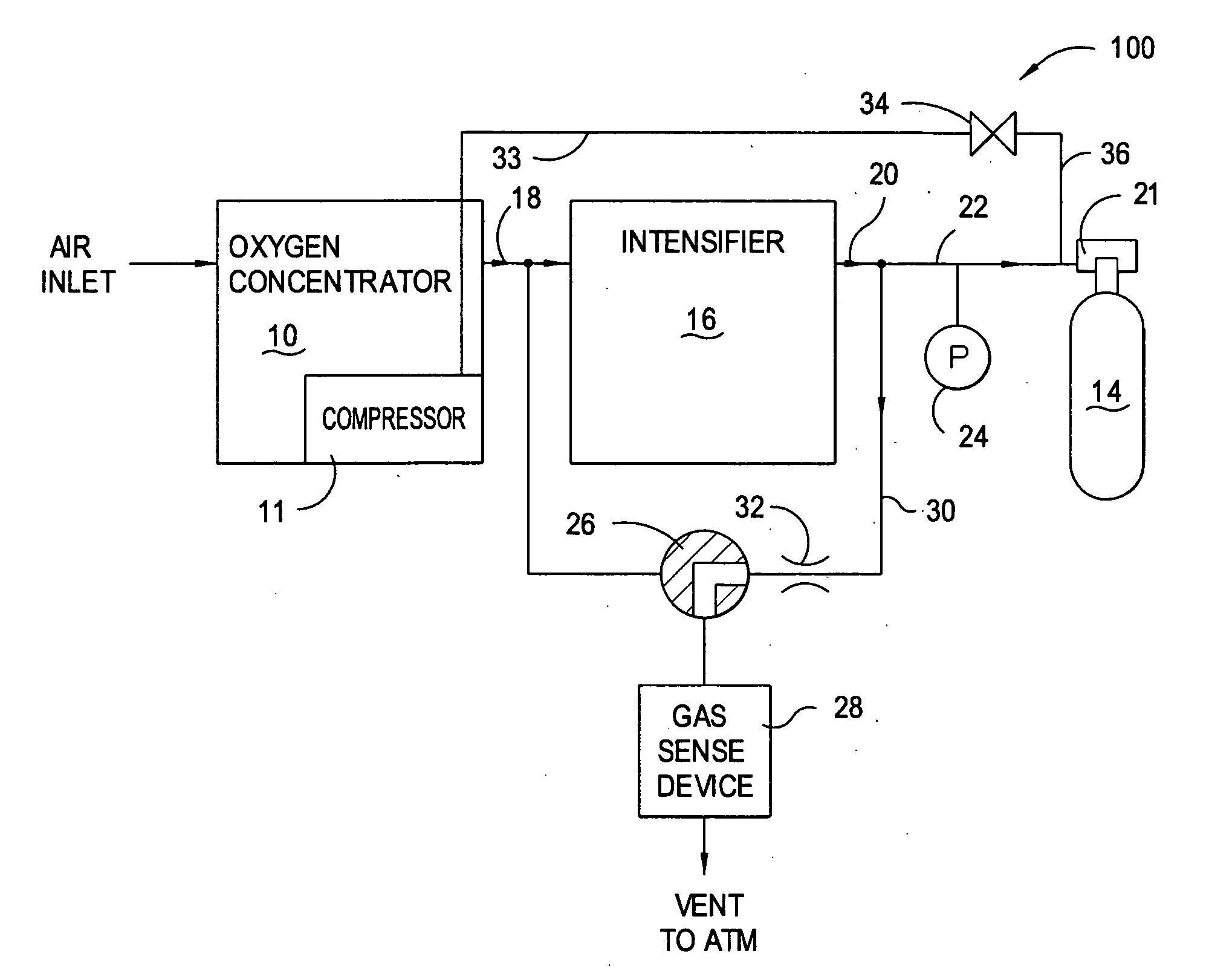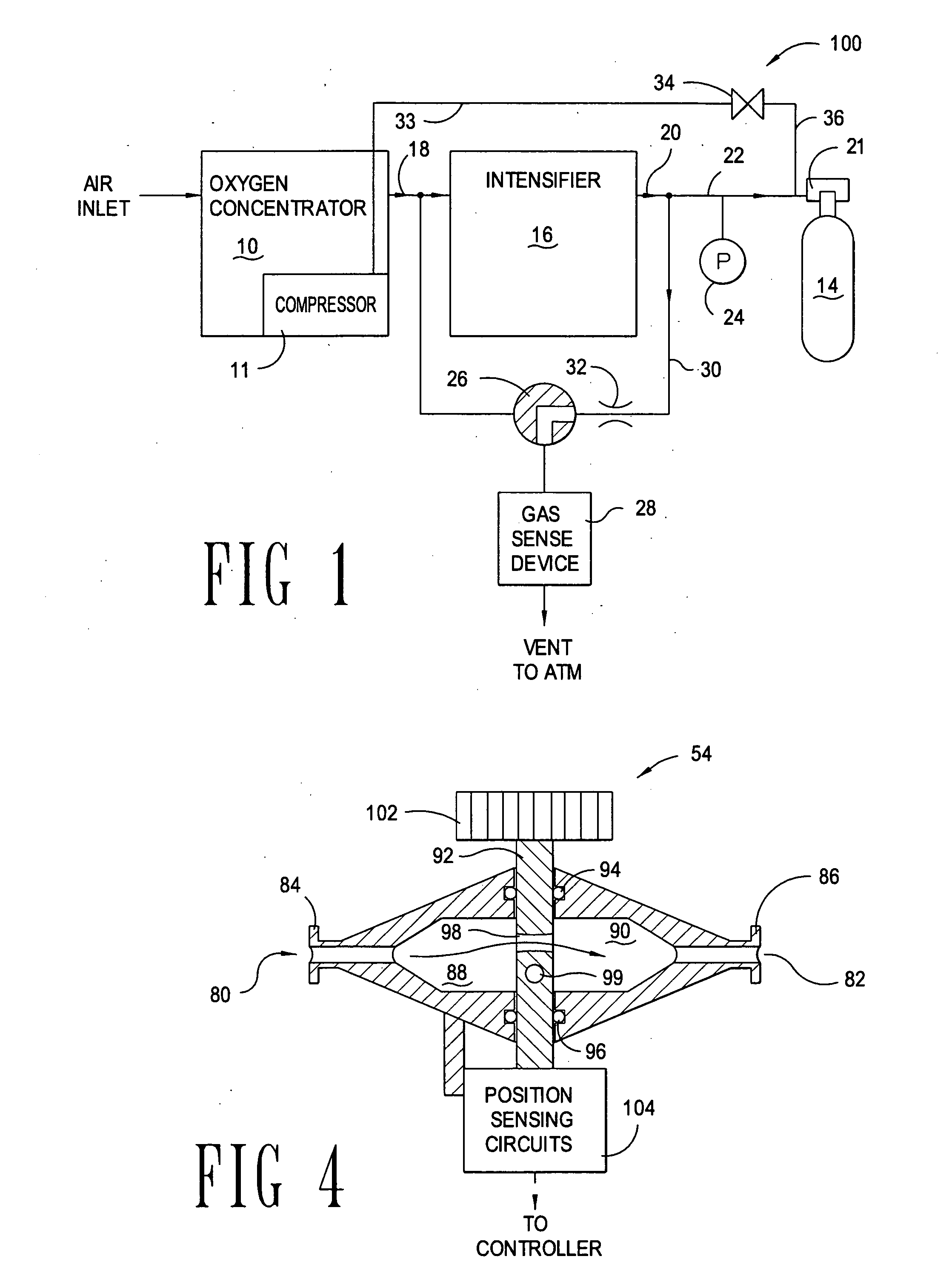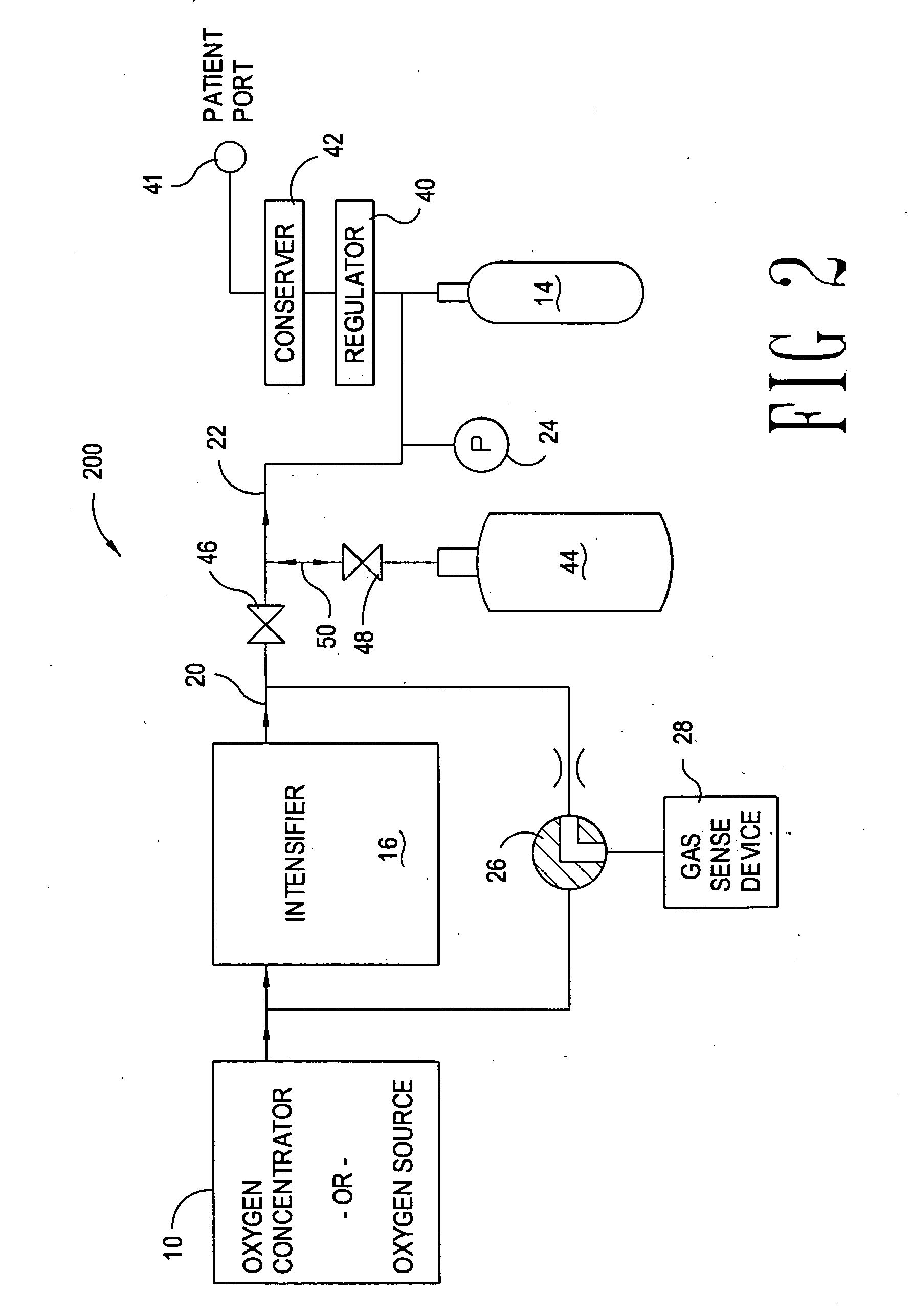Method and system for delivery of therapeutic gas to a patient and for filling a cylinder
a technology for therapeutic gas and cylinders, applied in the direction of valves, container filling under pressure, operating means/releasing devices, etc., can solve the problems of limited volume of portable cylinders, harmful gases, and other problems, and achieve the effect of reducing the risk of gas leakage, and reducing the safety of patients
- Summary
- Abstract
- Description
- Claims
- Application Information
AI Technical Summary
Benefits of technology
Problems solved by technology
Method used
Image
Examples
Embodiment Construction
[0011] The problems noted above are solved in large part by a method and system for delivery of therapeutic gas to a patient and for filling of a cylinder. One exemplary embodiment may be a trans-fill system that comprises an intensifier (operable to increase pressure of therapeutic gas provided at an inlet of the intensifier to create a compressed therapeutic gas stream), a conserver coupled to the compressed therapeutic gas stream (operable to deliver a bolus of therapeutic gas during inhalation of the patient), a patient port coupled to the conserver (operable to provide the bolus of therapeutic gas to the patient), and a cylinder connector (operable to couple a portable cylinder to the compressed therapeutic gas stream). The trans-fill system itself may be operable to provide therapeutic gas to the cylinder connector to fill the portable cylinder while providing therapeutic gas to the patient through the conserver.
[0012] In other exemplary embodiments, contents of the connected ...
PUM
 Login to View More
Login to View More Abstract
Description
Claims
Application Information
 Login to View More
Login to View More - R&D
- Intellectual Property
- Life Sciences
- Materials
- Tech Scout
- Unparalleled Data Quality
- Higher Quality Content
- 60% Fewer Hallucinations
Browse by: Latest US Patents, China's latest patents, Technical Efficacy Thesaurus, Application Domain, Technology Topic, Popular Technical Reports.
© 2025 PatSnap. All rights reserved.Legal|Privacy policy|Modern Slavery Act Transparency Statement|Sitemap|About US| Contact US: help@patsnap.com



